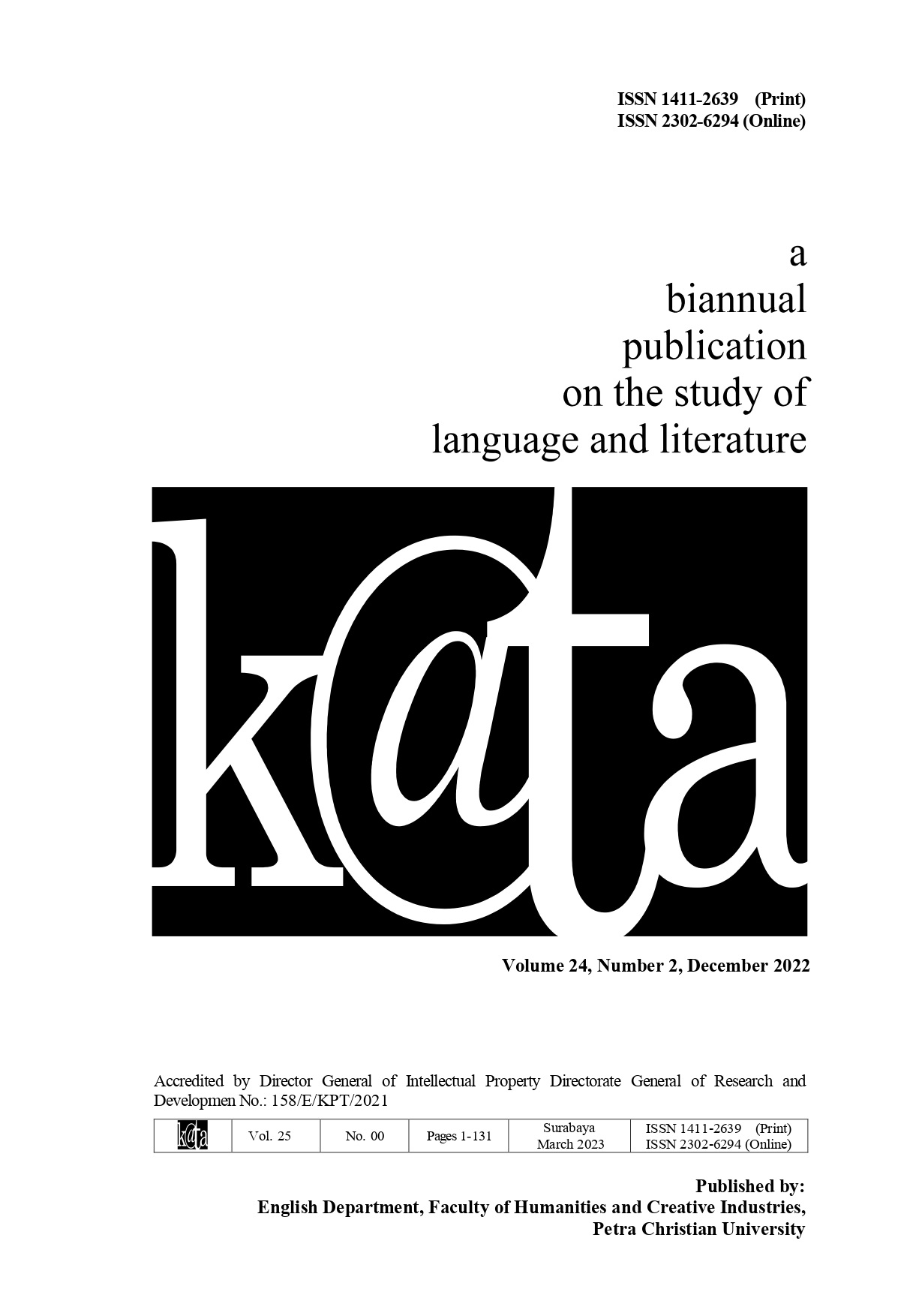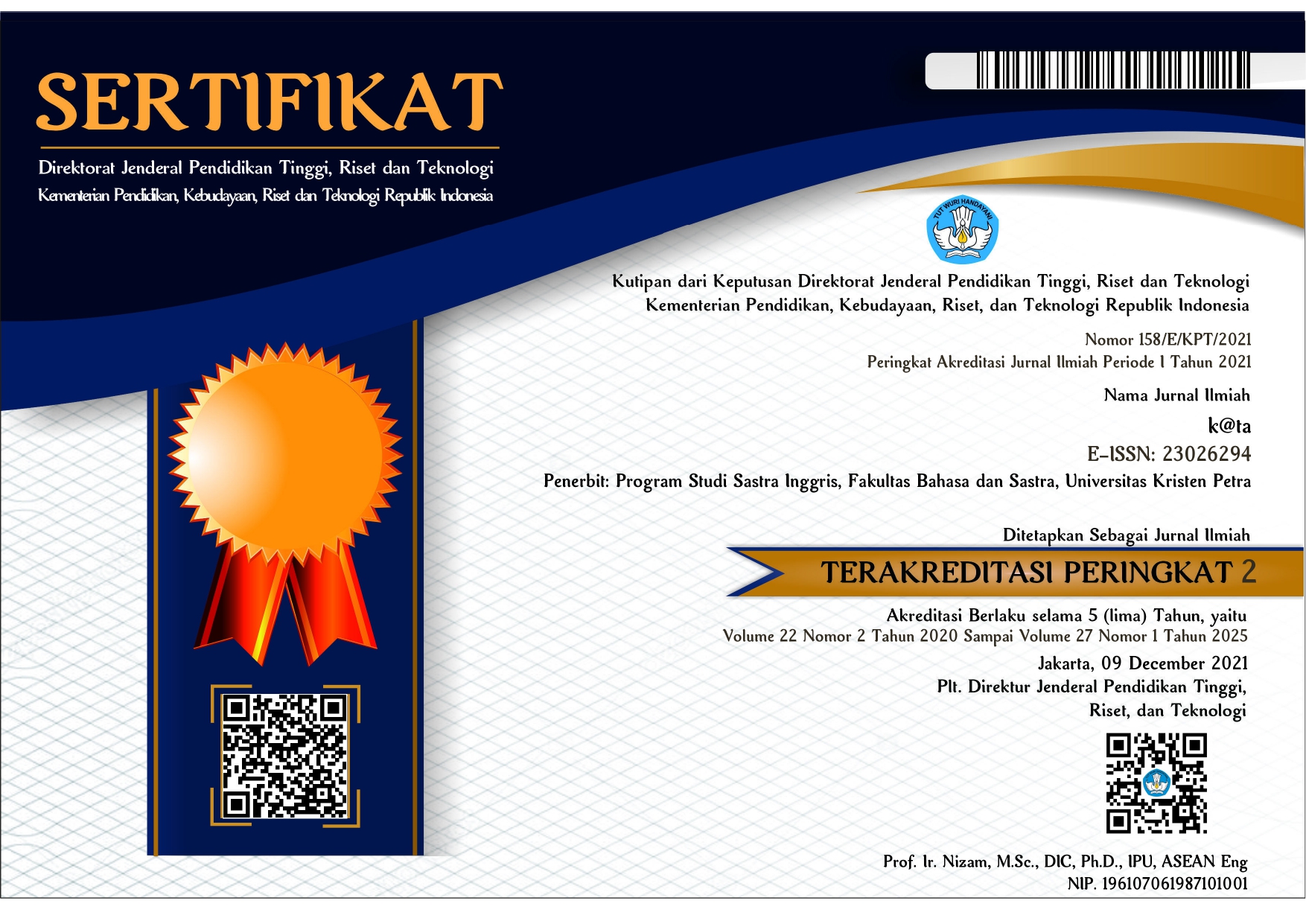How Interior Design Impacts Learning Performance for Children with Special Needs in Surabaya
Abstract
According to Indonesia’s Central Statistics Agency (BPS), the number of children with special needs in 2017 reached 1.6 million, and among them, only 18% received inclusive education services. The Surabaya Government has issued a policy that every school has an inclusion class to accommodate children with special needs. Many factors determine the growth and development of children, such as formal and informal education. Therefore, equity in education for children is a crucial topic to study. Since all children should receive proper educational facilities to maximize their potential, interior design can be a solution to convey an adequate learning environment for children with special needs. Thus, this paper will survey children with special needs concerning school design planning using interactive and non-interactive qualitative data collection methods, including literature focusing on behavioral characteristics related to the environment, interviews, observation, and visits to some appropriate sites. The survey will be conducted with at least 40 respondents, including parents, teachers, and peers of the children. The goal of this study is to provide suggestions to schools around Surabaya on how to make their education more inclusive.
Downloads
References
Desiningrum, D. R. (2016). Psikologi anak ber-kebutuh¬an khusus [Psychology of children with special needs]. Psikosain.
Inklusi penyandang disabilitas [Inclusion of persons with disabilities]. (2011). 1–4. https://www.ilo. org/jakarta/whatwedo/publications/WCMS_233426/langen/index.htm
Jorgensen, M., & Phillips, L. J. (2002). Discourse ana-lysis as theory and method. SAGE Publications.
KBBI. (n.d.). Inklusif [Inclusive]. In KBBI Online. Retrieved April 29, 2022, from https://kbbi.web. id/inklusif
Kementerian Sosial Republik Indonesia [Indonesian Ministry of Social Republic]. (2018). Sistem informasi penyandang disabilitas [Information system for persons with disabilities]. Kemensos. Retrieved from https://simpd.kemensos.go.id/
Menteri Pekerjaan Umum [Minister of Public Works]. (2006). Peraturan menteri pekerjaan umum nomor : 30/PRT/M/2006 tentang pedoman teknis fasilitas dan aksesibilitas pada bangunan gedung dan lingkungan [Regulation of the minister of public works number: 30/PRT/M/2006 concern-ing technical guidelines for facilities and accessibility in buildings and the environment].
Profil anak [Profile of children]. (2017). Sidiaperka. Retrieved from https://sidiaperka.kemenpppa. go.id/wp-content/uploads/2020/03/Tahun-2017_ Profil-ABK-Jawa-Timur.pdf
Pusat Layanan Pembiayaan Pendidikan [Education Financing Service Center]. (n.d.). Puslapdik. Retrieved March 26, 2022, from https://puslap-dik.kemdikbud.go.id/artikel/hari-disabilitas-internasional-2021:-libatkan-penyandang-disabilitas-pascacovid-19
Relaksasi saat pandemi [Relax during the pandemic]. (2021, July 22). Kompasiana. Retrieved from https://www.kompasiana.com/nitakristantinoer/60f90b2806310e42b71a8f72/relaksasi-saat-pandemi-dengan-snoezelen-room
Rudiyati, S. (n.d.). Pengembangan kurikulum adaptif di sekolah inklusif [Adaptive curriculum development in inclusive schools]. In Universitas Negeri Yogyakarta: Snoezelen multi-sensory environ-ments. Retrieved April 30, 2022, from https://www.snoezelen.info/

This work is licensed under a Creative Commons Attribution 4.0 International License.
![]() This work is licensed under a Creative Commons Attribution License
This work is licensed under a Creative Commons Attribution License




.png)
.png)

.png)













